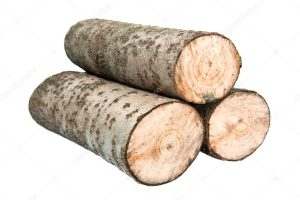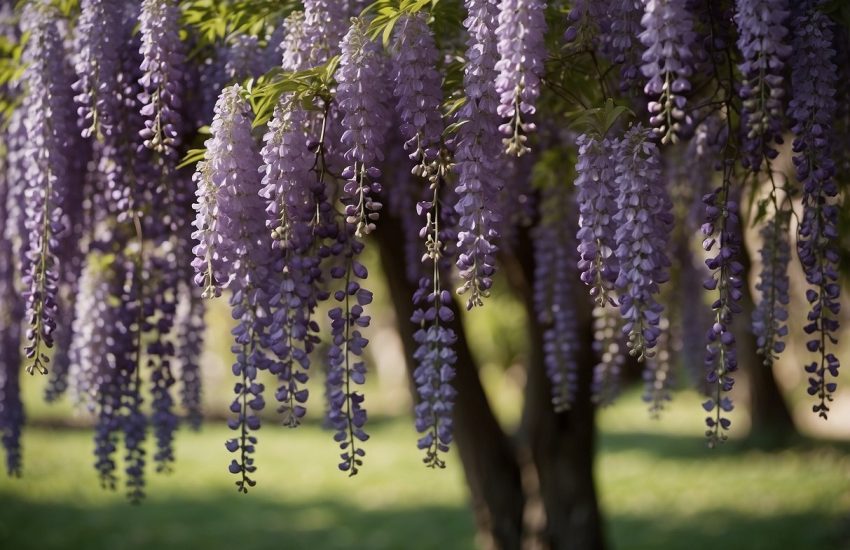Do Aspen Trees Produce Good Firewood?
The best firewood can vary depending on what you plan to use it for. When you want to use wood as the primary heating source for your home, you’ll want to use high-quality wood that produces a substantial amount of heat. If you’re going to build a fire in your fireplace to create a cozy atmosphere on cold winter nights, you can use lower-quality wood that doesn’t burn as hot.

Aspen is an excellent choice for a fireplace because the bark is easy to separate from the wood. When you peel the bark from the cut wood, it can be chopped up and makes an excellent fire starter. Many people prefer Aspen for kindling over other types of wood due to its low sap content. It’s easy to tell when Aspen has been dried properly by:
- How hard the wood is
- How easy it is to remove the bark for kindling
- You’ll see cracks in the cross-sections of the wood
Characteristics of Aspen Trees
Aspen trees are one of the species of Poplar trees, native to colder regions that have cool summers. Aspen is a deciduous tree species with soft wood that doesn’t burn as hot as other varieties. According to the U.S. Forest Service, interest is going in Aspens due to their management, supply, and diverse uses. Aspen trees are grown on 20 million acres in Wisconsin, Minnesota, and Michigan.
Quaking Aspen and Bigtooth Aspen are the two varieties most widely available in the U.S. Both species provide an equal amount of heat. The green weight of a cord of Aspen is 3655 lbs., while a cord of seasoned wood weighs 2387 lbs. Quaking Aspen only produces about half the amount of heat as other hardwoods. The low density makes it easier to ignite than some different types of wood. Quaking Aspen is a good choice for campfires.
Heat Output and Efficiency in BTUs
Aspen is a low-density wood that generates approximately 16.5 British Thermal Units (BTUs) per cord. Although this isn’t a high amount of heat generation for hardwood, it’s considered acceptable performance for softwood. Aspen is a hardwood with light density and will burn for approximately two hours before you must add more wood. Aspen is considered to be safe to burn in a fireplace than fir or pine.
Creosote Buildup
Creosote is a by-product of burning wood. Creosote causes the black build-up of soot in a chimney from firewood that doesn’t burn properly. Aspen only creates a minimal amount of smoke, so there’s less risk of creosote build-up than with some other types of wood. Aspen burns similarly to Poplar wood and is clean burning. Due to the low creosote build-up, Aspen is better to burn than conifers and is an excellent choice for open fires.
Amount of Smoke Spark Production
Aspen has a very low sap content and doesn’t produce much smoke. Aspen does have a high moisture content and should season thoroughly before burning it in a fireplace. While the Aspen is burning, it’s hot and can create large flames. Some deciduous trees aren’t good for firewood. Softwood doesn’t produce as much heat as hardwood. However, Aspen is preferred over most coniferous trees due to less sparking.
Coal Production
Aspen produces decent coals. The wood won’t burn for much longer than a few hours. However, the coals will stay hot for quite some time, so it’s easier to build up your fire again without beginning from scratch. With the minimal amount of smoke compared to other types of wood, it produces relatively good fires.
How Long To Season Aspen Firewood
When you’re going to season any ty[e of firewood, spring is an excellent time to get started. If you start seasoning your wood in April, it will be ready for use in your fireplace or your outdoor firepit by October. Aspen has a low sap content, is low density, and low moisture content. It takes less time to season than some other types of wood. The average time for Aspen wood to season for use in a fireplace is six to 12 months, which is less time than many other types of wood.
How To Tell the Difference Between Dried and Green Aspen
When Aspen is adequately dried, the wood has a greenish-gray or yellowish appearance. Undried Aspen may have a creamy white, gold, or light orange color. Wood that hasn’t been appropriately dried usually has a darker appearance than well-dried wood. The sound of well-dried Aspen logs hitting each other is loud and ringing. When the wood isn’t dried correctly, the logs have a dull sound when they hit each other. It’s easy to tell how dry the Aspen wood is by the amount of moss that covers the bark. On a well-dried Aspen log, if you rub your finger on the bark, it will turn into a cloud of green-tinted dust.
Is Aspen Firewood Expensive?
Typically, a cord of Aspen firewood will cost between $150 and $250. You should keep in mind that Aspen burns faster than some other hardwoods. You should plan on purchasing an additional 50 percent of the wood to generate as much heat as you’d get from a cord of Walnut or Oak. Aspen is excellent for burning as kindling in your fireplace because it doesn’t generate as much smoke as other hardwoods.
Pros and Cons of Using Aspen for Firewood
Advantages
- Aspen wood is a low-cost, consumable material
- It’s a good choice for kindling
- It works well to heat fireplaces and wood stoves
- Aspen can be used to clean soot from chimneys
- It has a long shelf life and can be stored for about three years in a dry place
- Aspen has high resistance to funguses and decay
- During combustion, Aspen has little smoke and no sparks
- Aspen only emits a small amount of ash from combustion
- Aspen has a pleasant, woody scent
- Aspen firewood has a reasonable price
Disadvantages
- Aspen is soft, pliable, and loose
- Aspen has a low calorific value
- Aspen doesn’t produce coal after combustion
- More rapid burnout than other hardwoods
- Aspen firewood is challenging to ignite if it isn’t dried sufficiently
How Aspen Firewood Compares to Other Trees
The heat output from hardwoods is between 70 and 80 percent. Birch, Spruce, and Pine ignite quickly. Aspen takes longer to ignite and burns out faster than other types of firewood. Aspen does have positive attributes. The wood doesn’t burn off a lot of smoke or tar. The amount of heat generated by Aspen is moderate; the flame is even and doesn’t shoot out. Flames from Aspen can destroy deposits of soot in the chimney.
Final Thoughts About Using Aspen for Firewood
Aspen is a wood that’s readily available and low cost. Depending on where you live, some hardwoods could cost between $150 and $500. However, some dealers may charge as much as $700 per cord. The cost may include a charge for the time it takes the dealer to chop and stack the wood. Aspen tends to rot faster than some other types of hardwood, so it should be appropriately stored in a shed or dry place.


